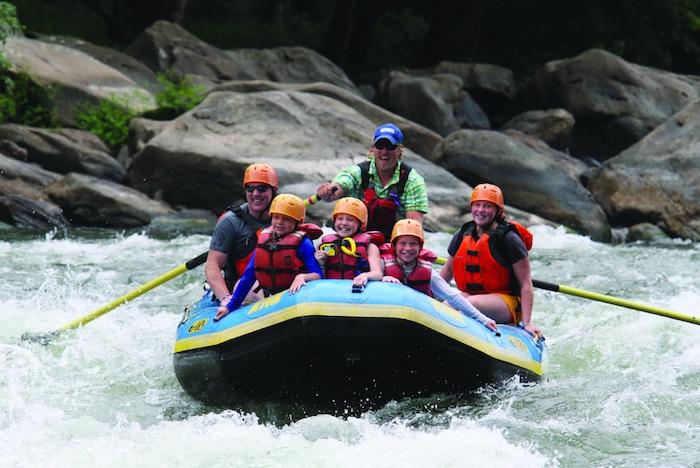
A new marketing campaign aims to brand New River Gorge National River, Gauley River National Recreation Area, and Bluestone Scenic River as "The National Parks of Southern West Virginia"/Visit Southern West Virginia
What's in a name, you ask? If you were told you could visit a "national park" or a "national recreation area," where would you head? Most would likely opt for the "national park," and that's part of the thinking behind the "National Parks of Southern West Virginia" marketing campaign.
New River Gorge National River, Gauley River National Recreation Area, and the Bluestone Scenic River have been units of the National Park System for decades. But because they lacked that "national park" appendage, not all park travelers realized they existed or thought to venture to them. That, tourism officials hope, soon will change thanks to the just-launched National Parks of Southern West Virginia marketing campaign.
The three national parks in southern West Virginia are each under separate legislation and titled with a different National Park Service category. Following more than 36 years of intermittent discussion, a marketing campaign will finally unite the three parks as The National Parks of Southern West Virginia.
According to the groups behind the campaign -- Visit Southern West Virginia, the National Park Service, the National Coal Heritage Area, and the New River Gorge Convention & Visitors Bureau -- these three park units, in conjunction with the U.S. Army Corps of Engineers and the state of West Virginia, protect 100 miles of water, "which makes it the largest federally protected system of rivers East of the Mississippi."
"We have three exciting national parks in our area, but their names don't always say national parks to those who visit our area. This campaign will increase visibility of our parks, celebrate their unique qualities and bring new visitors to the region to appreciate and experience them," Christy Bailey, chair of Visit Southern West Virginia, told The Register-Herald newspaper of Beckley, West Virginia.
Patricia Kicklighter, superintendent of New River Gorge National River, said, "I truly believe the people who are going to come here are going to see how beautiful these resources are, how wonderful and welcoming the people are, and they are going to fall in love with this area as much as I have. When you appreciate and love an area, what grows out of that is a reason to protect it and to conserve it. If people don't know they are in a national park, how do they know how to behave when they are here and how to protect these resources?"

 Support Essential Coverage of Essential Places
Support Essential Coverage of Essential Places







Comments
The Old Conundrum on display again. Are these places to preserve and conserve for future generations while providing enjoyment for the present -- or are they money machines?
When the superintendent says, " . . . When you appreciate and love an area, what grows out of that is a reason to protect it and to conserve it. If people don't know they are in a national park, how do they know how to behave when they are here and how to protect these resources?" she is hitting squarely on one of the most critical, and yet most neglected, roles of the NPS.
If we are going to continue to try to attract hordes of people to our parks -- or whatever other descriptor we choose to attach to them -- shouldn't there be at least an equally great effort made at the same time to educate those we seek to attract?
It could be as simple as just modifying FIND YOUR PARK to FIND, LOVE, AND PROTECT YOUR PARK.
Is the NPS missing a wonderful opportunity to do that in this Centennial Year?
A conundrum for you. Many people understand those two aren't mutually exclusive. I agree 100% with the Superintendents comment: "When you appreciate and love an area, what grows out of that is a reason to protect it and to conserve it"
If people don't go there, there will be no love.
True. But shouldn't we at least be attempting to educate them and enlist their help in preserving these places? If we can do that successfully, maybe it will someday be easier to limit expansion of parking lots, roads, and other invasive facilities inside the parks.
It seems that we are no longer doing that.
Nothing wrong with that, as long as we aren't fabricating the facts along the way.
You are creating a false equivalancy by calling them "National Parks of Southen West Virginia." There are no national parks in West Virginia--only areas managed by the National Park Service. Get an area designated as a National Park, then market it as such. Your ploy is dishonest and deceptive.